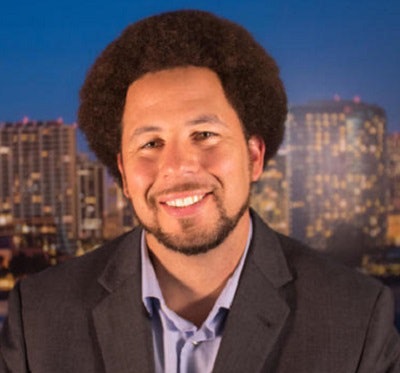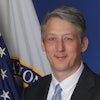Let’s face it: Many more colleges and universities are having conversations about campus climate specific to diversity, equity and safety than in years past. There has been a palpable rise in awareness about extreme ideologies and a growing apprehension about the forthcoming presidential election season, one that will be fueled by topics like xenophobia, racism, sexism, ableism and other phobias and -isms.
 Dr. J. Luke Wood
Dr. J. Luke WoodIn response, college leaders have begun to realize that assessing their campus climate and culture for diversity is paramount. Tied to discussions on campus climate are efforts to promote equity and success for students from minoritized populations, with the growing recognition that a healthy climate produces conditions that allow for students to learn, develop and succeed.
Said differently, a crappy climate does not enhance the likelihood that students from diverse backgrounds will enroll, achieve and graduate. Further, poor climate can constrain the level of interactions that help all members of the campus to not merely feel safe, but productive and successful. This extends to faculty and staff at all ranks within our organizations.
Too often left out of the litany of surveys, interviews and town halls designed to learn about campus climate – and, ultimately, the decision-making process – are the people who have the true on-the-ground understanding of what is really taking place.
Certainly, the first group to engage are students, then the usual suspects: faculty, staff and administration. But too often forgotten are those who have intimate, day-to-day knowledge of the inner workings and health of the organization. They are the custodians, food service employees and groundskeepers who are engaged in more invisible work within our organizations. These individuals are key to any meaningful, intentional and honest assessment of what is really occurring on our campuses. Period.
In prior research with my colleague, Dr. Frank Harris III, we found these three groups are absolutely central to conversations on student success. Namely, because they serve as the primary educators (yes, “educators”) that provide validation for low-income, nontraditional and students of color who often do not receive these messages of support from their own faculty or administrators. In fact, we have routinely found that faculty members will avoid interactions with students of color – particularly men of color – outside of the classroom due to implicit biases. Therefore the relationships that students have are often with people who authentically care about them – custodians, food service workers, groundskeepers – who also often look like and are like them.
That is key. Such employees within our organizations often come from the same communities as students of color and are often people of color themselves, whereas students’ faculty members overwhelmingly are not. While the voices of these key groups are needed in conversations on student success. so, too, are they needed for discussions of campus climate. And here is why.
They have a true pulse for the climate and culture of the campus. Quite often, they are among the first to hear, see or say that something has gone wrong. They are also often the ones tasked with pulling down fliers and posters from extremist groups that are designed to spread hate, bias and fear. They are the first ones to see, report and then be tasked with removing racist, sexist and xenophobic graffiti in bathrooms, classrooms and hallways. They can tell you the buildings and areas on campus where these issues are most prominent and what the general messages have looked like over time. They can tell you how it made them feel, as well as the students who may have seen them before the painting or cleaning was done.
For many, given that they come from the communities that are often targeted, this can be an emotionally laborious task and it is one that is rarely recognized as such. They can tell you the real climate of the campus – not the one that is assumed by the larger campus, or the one printed in fancy brochures.
Moreover, they often have deep and authentic relationships with students, particularly those who are from the most marginalized backgrounds. They are the educators who care for, validate and watch over our students who are homeless and housing-insecure, as well as those who struggle with food insecurity. They know the names and stories of the minoritized students who must study at odd hours, create makeshift study areas and sleep in open spaces when needed. They know when students go without eating, have their cards declined at the lunch counter or forage through trees on campus that have fresh fruit so they can eat.
What’s more, they know that these are not individualized realities. They have an awareness that many of our students – groups of them – are experiencing these daily troubles and traumas. They have the pulse of the campus, not only of the student with financial means who may ignore their presence and treat them as lesser than, but the students without who desperately soak up their encouragement and a face that looks like their own. They are stand-in brothers, sisters, uncles, aunties, tios and tias to communities where fictive kinship is a means to survival. They are the Black and Brown foundation of the ivory tower.
They can provide deep insight into the climate experienced by marginalized communities – as they are too often the recipients of subtle slights, insults and sharpness from many faculty, staff and administrators who see them as second-class citizens. They are the canaries in the coal mine. To clean the toilets, mow the lawn or run the register is too often viewed as lesser than teaching a class, running a division or publishing a new article or book – especially in an environment bent on prestige.
But both are essential to operating an institution. In all, their insights tell you how those who are made invisible by society feel within institutions that, more often than not, render students of color invisible.
So, if you want a true assessment of your campus climate, don’t leave out the ones who really know.
Dr. J. Luke Wood is Associate Vice President for Diversity & Innovation and Distinguished Professor of Education at San Diego State University. You can follow him on Twitter @DrLukeWood
















